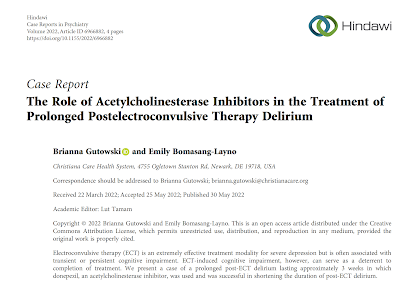Systematic Review of Treatments For Agitation in TBI: ECT Mentioned

Out on PubMed, from researchers in Australia, is this review: Effectiveness of Non-Pharmacological Interventions for Agitation during Post-Traumatic Amnesia following Traumatic Brain Injury: A Systematic Review. Carrier SL, Ponsford J, Phyland RK, Hicks AJ, McKay A. Neuropsychol Rev. 2022 Jun 10. doi: 10.1007/s11065-022-09544-5. Online ahead of print. PMID: 35687261 Review. The abstract is copied below: Agitation is common in the early recovery period following traumatic brain injury (TBI), known as post-traumatic amnesia (PTA). Non-pharmacological interventions are frequently used to manage agitation, yet their efficacy is largely unknown. This systematic review aims to synthesize current evidence on the effectiveness of non-pharmacological interventions for agitation during PTA in adults with TBI. Key databases searched included MEDLINE Ovid SP interface, PubMed, CINAHL, Excerpta Medica Database, PsycINFO and CENTRAL, with additional online reviewing of key journals...














